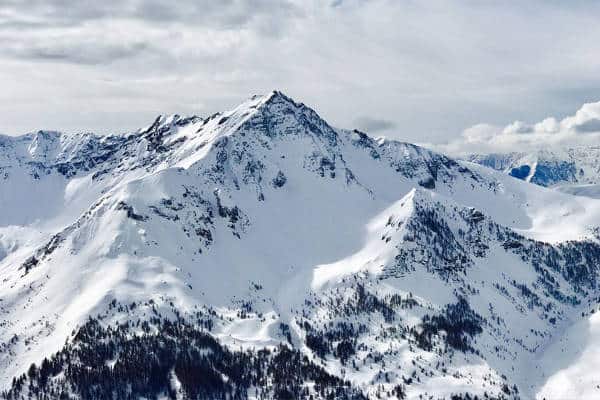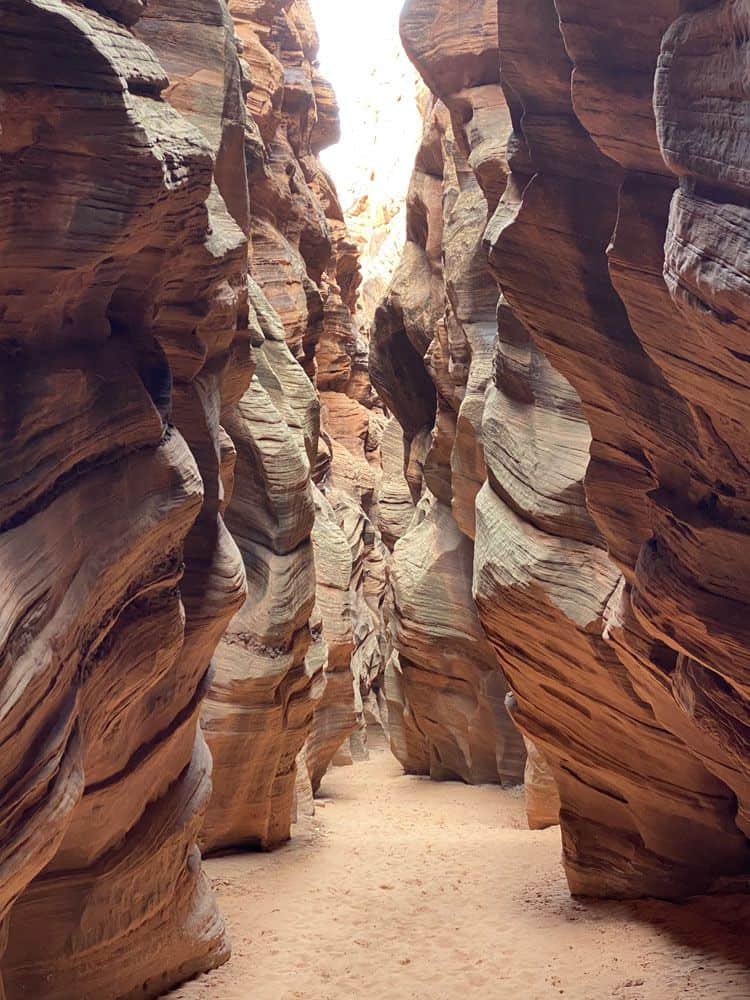As you may already know, the Top 5 Priorities in a survival situation are Shelter / Protection, Fire / Warmth, Rescue Signals, Water, Food…which is just one of the topics we teach on our bushcraft survival courses Australia.
However, while these generally don’t change in any given survival situation – whether it be out in the wilderness or in a natural disaster in an urban environment – sometimes the terrain or a particular set of conditions will mean that the order changes.
The order in which we need to prioritise what comes first differs depending on where you are in Australia when a survival situation occurs in the bush.
Given that Australia is an extremely large country and even a continent in its own right, the terrain and natural environment changes enormously according to where you are.
We have such diversity here in our great southern land that ranges from snow-covered mountains to tropical rainforests, from temperate rainforests to alpine plateaus, from deep canyons and even to deserts.
In this article, we’re going to cover how the Top 5 Survival Priorities change in different terrains and environments such as cold, wet weather vs hot, dry weather etc.
Bushcraft Survival Courses Australia: How The Order Of Survival Priorities Changes Depending On Terrain
Mountains & Alpine Plateaus
 Mountains are essentially similar to hills, but are much higher in elevation. However, the minimum height for it to be classed as a mountain is 1,000 metres. The tallest mountain on earth is Mount Everest, standing at over 8,849 metres high.
Mountains are essentially similar to hills, but are much higher in elevation. However, the minimum height for it to be classed as a mountain is 1,000 metres. The tallest mountain on earth is Mount Everest, standing at over 8,849 metres high.
Most mountains are formed by volcanic activity and can be shaped drastically by various natural elements such as glacial erosion, wind erosion, and water erosion.
With these higher altitudes come colder temperatures, more severe wind gusts, and a much higher frequency of rainfall.
Higher still, and you will likely find that you’re above the snowline where there is often snow present all year round, and you will come across glaciers in many countries.
In this type of terrain, you are likely to follow the top survival priorities in the order that we have them above.
The higher the altitude, the harder it will be to light a fire as well, because the oxygen levels will be more and more depleted the further up you ascend.
Water will also become harder to source if it’s locked up in snow or ice, so you will really depend on your bushcraft and survival knowledge here.
In cold climates especially, the importance of staving off hypothermia and building a well-insulated shelter will be paramount…as will the need for a good fire and the correct ways to reflect the het given off.
In SCT’s bushcraft and survival courses in Australia, we additionally cover heat gain and loss methods, which are essential survival skills for a cold weather environment.
Personally, I do a lot of solo hiking on alpine plateaus where the higher altitude mixed with the harsh conditions of strong, cold winds and cooler temperatures mean there are no trees present.
There are thousands of hardy bushes though, nearly all with sharp, spikey leaves on them (like the Scoparia plant), but these are kept to shrub or bush height due to the nature of the elements and their exposure particularly to wind.
This makes it particularly difficult to find both tinder and, in some cases, kindling for a fire although you can locate both of these main components if you know where to look (see our other blogs).
Equally applicable though, when you’re in the mountains in summer and you’re below the snowline…it can be quite warm with sunny skies and light winds, but it’s always best to be prepared for inclement weather.
As with all things bushcraft and survival – the key aspect is having the right knowledge in the first place!
Deserts
A desert is described as a barren landscape with little or no water, rainfall, or vegetation. The living environment is very harsh and unforgiving, with most deserts unsuitable for many plants or animal life.
 Deserts may either be covered by sand, hardened earth, and rocks – they’re not all the typical scene of cascading sand dunes. They may contain miles and miles of hard-baked earth and bare rocks.
Deserts may either be covered by sand, hardened earth, and rocks – they’re not all the typical scene of cascading sand dunes. They may contain miles and miles of hard-baked earth and bare rocks.
The desert climate tends to be in the extremes; scorching hot during the day and very cold at night. Temperatures at night can reach below zero.
Some areas in northern Europe and the Arctic have deserts that remain chilly or in moderate temperatures all year round. Deserts at times experience some rainfall now and then, as well as sandstorms.
They are generally uninhabited or deserted lands, due to very little or no availability of water. This has made it extremely difficult for people to live in them unless there is a water source close by.
Some deserts contain natural springs deep underground, and some support indigenous vegetation such as cactus. The majority of deserts can actually expand or shrink over time with a changing climate.
There are two main types:
- Sand dunes (small loose sandhills).
- Salt flats (small area of salt-covered flat land or dried up inland lake).
In this type of terrain, water will be your primary survival priority, as it’s in such short supply, and protection from the extreme high temperatures and harsh, scorching sun.
You will need to search for shady areas in any rock formations, rocky outcrops on higher ground, or signs of greener vegetation that may indicate where a water source could be.
You’ll also want to search for any natural shade there might be or build a suitable protective shelter and take refuge out of the beating sun.
Remember that it’s critical to only expend the minimal amount of energy as possible in any activity you undertake, as this only adds to further dehydration and will require you to find more food, which means you’ll need yet more water.
Once you’ve found shade or created your shelter, you may even want to rest during the severe heat of the day and move at night instead when it’s cooler, using the stars for natural navigation.
As with the scarcity of water, there will be a real scarcity of food from animals in this terrain.
Rainforests
 Forests and rainforests are terrains that are the polar opposite of deserts and support an abundance of both wildlife and vegetation.
Forests and rainforests are terrains that are the polar opposite of deserts and support an abundance of both wildlife and vegetation.
These kinds of environments are covered with tall, slim trees and all kinds of vegetation such as vines and ivy plants, as well as a hugely diverse number of wildlife species.
The first noticeable feature of a rainforest is that they are almost totally covered with dense tree canopies and are usually found in areas with more temperate or even tropical climates.
Some can be designated as national parks and others are even protected under the UNESCO World Heritage List.
Villages and towns are nearly always settled sparsely about rainforests. In many countries, the forests are looked after by professional park rangers and foresters, paid by the government.
Some forest types include:
- Jungles (these are dense and tangled rainforests that are almost impossible to get through, and come in two distinctions: primary and secondary).
- Seasonal dry forest (these go through periodical lengthy dry seasons).
- Temperate forest (these are found between the polar and tropic regions of the Northern and Southern hemisphere).
- Temperate rainforest (these receive heavy rainfalls).
In this kind of terrain, water is readily available and can be sourced from either streams, rivers, a number of the plants themselves, and even collected from leaves etc, as rainfall is frequent and often heavy.
In terms of your survival priorities – again, shelter from the persistent downpours (with a good waterproof roof) is critical, as is the ability to light a fire in the high humidity and precipitation.
Lighting a fire will take a long time in these conditions…and dry wood will be hard to come by. Having a decent fire that produces smoke will also help keep away the bugs.
Here, bushcraft skills will be paramount in order to make the rainforest work for you and not against you. Other elements exist in rainforests / jungles, such as the psychological fear from
Survival psychology is another thing that we teach on our bushcraft survival courses in Australia.
Heat exhaustion and avoiding getting bitten by mosquitos, ants, and larger fauna such as snakes and the like (a more immediately deadly threat) are certainly things to watch out for in this environment.
Canyons & Valleys
 Canyons, similarly to valleys, are most often formed when large bodies of water cut through mountains or hills. However, compared to valleys they are deeper, narrow, and have steeper sides.
Canyons, similarly to valleys, are most often formed when large bodies of water cut through mountains or hills. However, compared to valleys they are deeper, narrow, and have steeper sides.
They can at times have water bodies such as rivers, present within them such as the Blue Gum Forest in the Blue Mountains near Sydney, Australia – where I’ve spent a number of years solo hiking.
Canyons appear as large depressions in the ground cut through steep cliffs, and are formed through erosion by river and other weather conditions.
Rivers are occasionally found moving through the lower surfaces of the canyon, and are capable of washing away rocky layers over time, however, not all canyons have rivers flowing through them.
If a creek and river source have very different elevations, erosion due to the water bodies and weather activities can result in the formation of a canyon.
Canyons found between two mountain peaks can have a single opening and are referred to as box canyons. However, slot canyons are extremely narrow canyons having very smooth walls.
Some other types of canyons include plateau and submarine canyons. Canyons can be found anywhere around the world, including places like North and South America, Africa, Asia, and Europe.
In this style of terrain, your survival priorities are similar to either mountainous regions or deserts – depending on where you are in the world.
Many canyons I’ve been to are in temperate areas of the world so your top priorities here are in the usual order, but slot canyons etc can often be in extremely dry or desert areas like in Arizona (USA), where you would follow the same principles and priorities as desert terrain.
No matter how dry a riverbed looks, always avoid setting-up camp there or too close to a flowing stream/river.
The majority of slot canyons etc are formed by flash flooding, which can regularly occur when rainfall many kilometres away from your location rushes into the creeks and rivers.
This event causes a massive surge of water to be funnelled through bottlenecks such as slot canyons with such force that any man-made structure or even large trees and boulders will be swept along with it.
So, to learn how to cope in any terrain or environment, why not call SCT and book one of our four, one-day bushcraft survival courses Australia?
